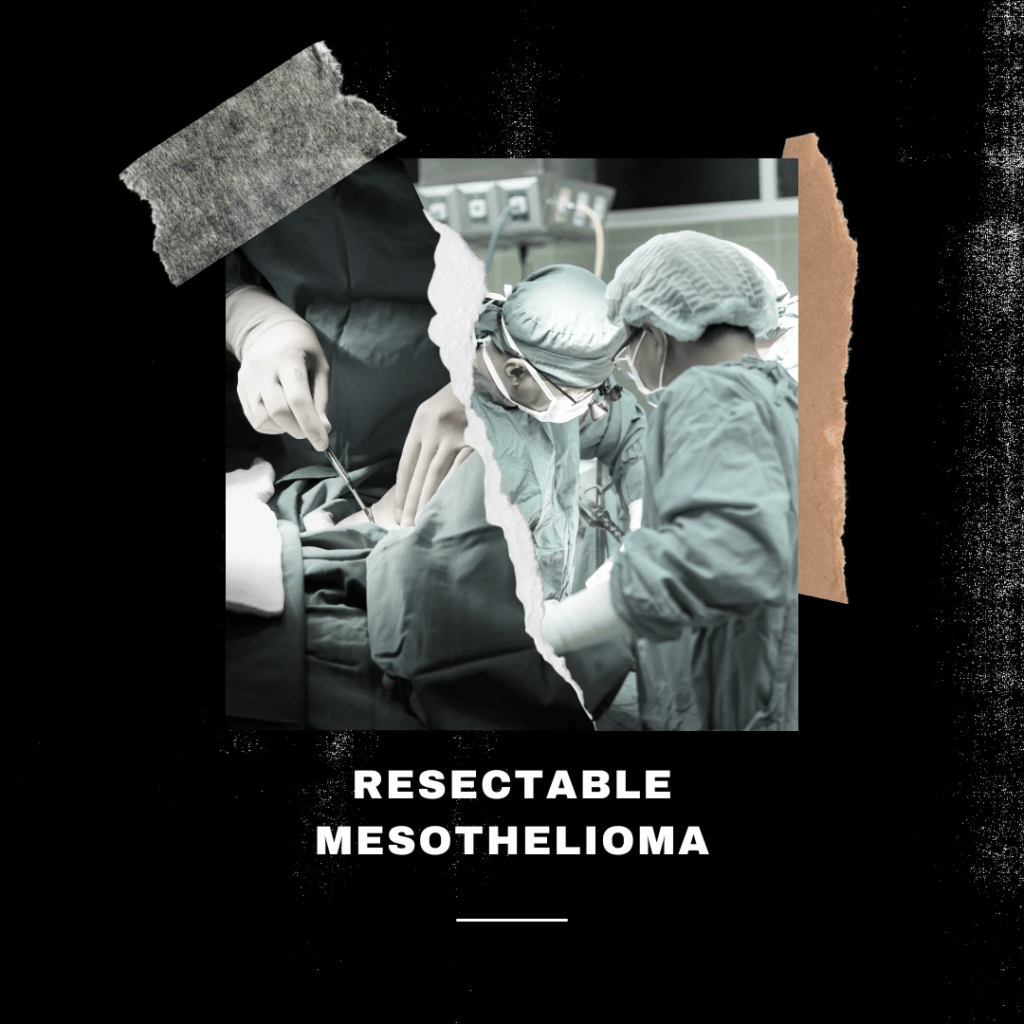Key takeaways: One of the treatments for mesothelioma (usually used in conjunction with other therapies, like chemotherapy or radiation therapy) is surgery. This means that the spread of cancer is resectable, or able to be entirely removed. Extended pleurectomy/decortication is the most popular surgery: it includes a removal of the pleural tissues and removing only of affected areas in the chest/lungs. An extrapleural pneumonectomy might be used for more advanced stages of mesothelioma, as it includes the entire removal of lungs/pleura. Importantly, both techniques have been found more effective when used in conjunction with other therapies, when treating mesothelioma, especially in preventing the remission of mesothelioma. 
Extended Pleurectomy/Decortication (eP/D)
While this isn’t the most radical surgical approach, eP/D is a viable treatment option, especially for cases of pleural mesothelioma that haven’t infiltrated the lungs. eP/D seeks to preserve lung tissue: first, the pleurectomy procedure removes the pleura, or the tissue surrounding the lungs. This is where pleural mesothelioma originates. Next, the decortication phase of treatment serves like a spot-treatment for abnormal growths: instead of removing the entire affected location, doctors will remove any abnormal areas of growth. This is usually on the lungs, considering their proximity to the pleural tissues, but can also be anywhere in the chest cavity (like the mediastinum, diaphragm, pericardial tissues, etc.)
Some retrospective analysis studies have found the relatively less invasive eP/D procedure to be more effective than other surgeries; this could be because of the age of mesothelioma patients and their ability to tolerate invasive surgeries.
Extrapleural Pneumonectomy for Treating Mesothelioma(EPP)
Extrapleural pneumonectomy (EPP) is a course of treatment that seeks to remove and replace. Depending on the extent of metastasis (or spread), stage of mesothelioma, and the overall health of the patient prior to treatment, EPP is an option. Oftentimes, it’s a technique used with different treatments to ensure the cancer a.) does not spread beyond what is resectable (what is able to be removed with surgery, and b.) isn’t “hiding” beyond detection (i.e., in other tissues, wasn’t removed or killed in its entirety). As compared to other surgery-based techniques, like the aforementioned eP/D, EPP is a radical removal and replacement. EPP seeks to remove entire organs that have been affected: sometimes, entire lungs or mesothelial tissues will be removed and replaced with artificial renderings.
The overall median survival rate post-EPP is 12-20 months, which is a significant improvement from traditional mesothelioma projections of survival, which is around or less than 12 months. Self-attributed quality of life rates increased after the EPP surgery; this could because an EPP alleviates the discomfort and pressure of mesothelioma. Importantly, though, the eP/D procedure is more widely recognized and used, given it doesn’t take the removal, generation, and replacement of entire organs.
Trimodality Therapy for Treating Mesothelioma(TMT)
As previously mentioned, using resectable (surgical) techniques with non-surgical therapies (like radiotherapy, chemotherapy, etc.) has proven more effective than either technique on their own. This approach is formally called trimodality therapy (TMT), and its effectiveness is well-documented: “Multimodality strategies, proposing surgery, chemotherapy, and radiotherapy combined in various orders, are shown to improve survival with reported median survivals between 17 and 35 months and 5-year survival of 15% to 20% in different series [17,28,29,30,31],” (Mangiameli et al.). Because TMT depends on patient-dependent variables, like the extent of the cancer, where it has spread, etc., the order of TMT is subject to change. For example, one patient might receive chemotherapy then undergo eP/D; another patient might undergo EPP then radiotherapy. The utility of TMT is its ability to cater to and and support different cases of mesothelioma.
If you or a loved one has been diagnosed with mesothelioma, please call The Halpern Law Firm at (800)-505-6000. We are here to help you navigate the legal process of filing a claim to receive compensation for your cancer diagnosis. We help mesothelioma victims and their families in Pennsylvania.
Sources:
- A Systematic Review of Extrapleural Pneumonectomy for Malignant Pleural Mesothelioma—ScienceDirect. (n.d.). Retrieved February 5, 2024, from https://www.sciencedirect.com/science/article/pii/S1556086415318207?ref=pdf_downl oad&fr=RR-2&rr=850c57aacd7a8c30
- Cao, C., Tian, D., Park, J., Allan, J., Pataky, K. A., & Yan, T. D. (2014). A systematic review and meta-analysis of surgical treatments for malignant pleural mesothelioma. Lung Cancer, 83(2), 240–245. https://doi.org/10.1016/j.lungcan.2013.11.026
- Mangiameli, G., Bottoni, E., Voulaz, E., Cariboni, U., Testori, A., Crepaldi, A., Giudici, V. M., Morenghi, E., & Alloisio, M. (2021). Extended Pleurectomy/Decortication for Malignant Pleural Mesothelioma: Humanitas’s Experience. Journal of Clinical Medicine, 10(21), 4968. https://doi.org/10.3390/jcm10214968
Written By Carina Filemyr
Don’t Wait—Contact an Experienced Pennsylvania Mesothelioma Attorney Today!
Now that you know the mesothelioma statute of limitations in Pennsylvania, contact an experienced attorney from our firm to represent your case before time runs out.
At Halpern Law Firm, we help clients throughout Pennsylvania, with offices in Philadelphia, Pittsburgh, Allentown, Scranton and Johnstown. Call us today for a free consultation at (800) 505-6000.